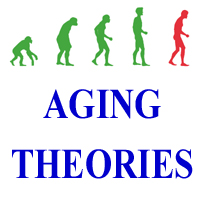 The situation regarding the programmed vs non-programmed aging controversy in the commercial world (doctors, patients, pharmaceutical companies) is very different from the situation in the academic world. Patients and doctors tend to be relatively unconcerned about obscure nuances in the theoretical basis of a treatment approach and much more concerned with effectiveness and lack of adverse side-effects. Certification of drugs and treatments generally does not involve extensive theoretical discussion but rather demonstration of effectivity and reasonable side effects.
The situation regarding the programmed vs non-programmed aging controversy in the commercial world (doctors, patients, pharmaceutical companies) is very different from the situation in the academic world. Patients and doctors tend to be relatively unconcerned about obscure nuances in the theoretical basis of a treatment approach and much more concerned with effectiveness and lack of adverse side-effects. Certification of drugs and treatments generally does not involve extensive theoretical discussion but rather demonstration of effectivity and reasonable side effects.
Commercial operations are much more private and internal thinking about the theoretical basis of some treatment development effort can be closely held.
The global pharmaceutical industry (including biopharmaceuticals) is one of the largest in the world (with a current market capitalization of more than a trillion dollars) and can be expected to grow as populations of developed countries continue to age. According to a study published in JAMA (1/2010), in the U.S. “the pharmaceutical industry is the largest contributor towards funding research, funding over 60 percent. The government contributes to about a third of the costs, with foundations, advocacy organizations and individual donors responsible for the remaining investments.”
During the long period during which programmed aging was virtually universally thought to be theoretically impossible, it was entirely reasonable for a pharmaceutical company dealing with age-related diseases to invest all of its resources into research based on non-programmed aging concepts.
However today, an even cursory review of the literature would reveal that programmed aging can no longer be considered to be “impossible.” Consequently, any such company would need to perform a “due diligence” study of the current situation and produce an internal estimate of the probability that programmed theories are correct along with an estimate of the likely nature of the human aging program and the research directions suggested by that estimate. Any such study would need to consider the following:
- Programmed aging theories suggest new paths toward treating age-related diseases that consequently present the possibility for rapid initial progress or “low hanging fruit.”
- A programmed aging approach involves interfering with the operation of a biological program, likely to be similar to other programs and involving signaling, hormones, receptors, proteins, etc. This is a relatively familiar problem.
- Programmed aging theories suggest that aging, per se, is a treatable condition and therefore suggest that treatments can be devised for delaying and potentially reversing at least some aging symptoms and diseases, especially in relatively older patients.
- Competitors (e.g. Google Calico and AbbVie) are known to be already pursuing programmed aging research.
There is of course no such thing as certainty in any drug development effort. Any such research project is essentially an informed wager based on the available information. Given the foregoing it seems unlikely that any larger pharmaceutical company dealing in age-related diseases and conditions would conclude that they can completely ignore programmed aging concepts in developing their research planning. Programmed aging researchers may go from being semi-pariahs to being in high demand!
Are we likely to see the introduction of drugs that have been clinically tested and FDA approved “to delay human senescence?” This is very unlikely to happen because the claim is too broad, the claim is controversial, and the claim is extremely difficult to prove. We are much more likely to see a drug claim along the lines of: “reduces the adverse effects of macular degeneration in certain elderly patients.” Notice the narrow claim, much easier clinical demonstration, and lack of controversial claims. In addition, for programmatic reasons companies would be likely to want to develop 50 drugs to treat 50 different diseases and conditions of aging as opposed to one or a few drugs to treat senescence.
Conclusion: We can expect to see increasing efforts by pharmaceutical companies to explore drug development based on programmed aging concepts.
